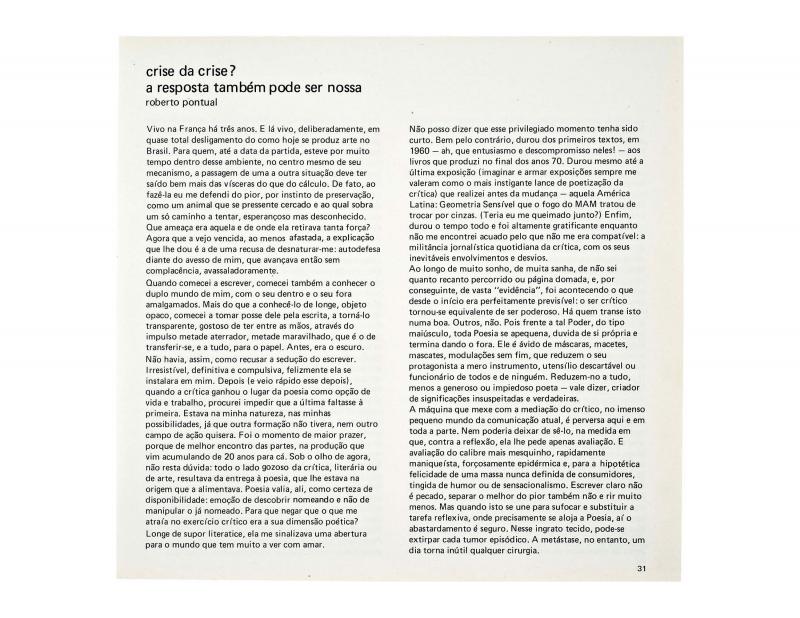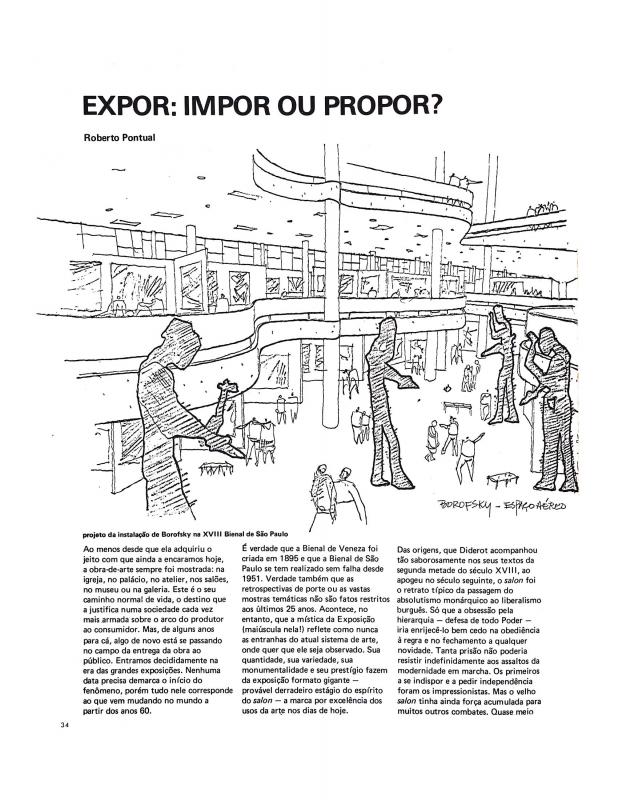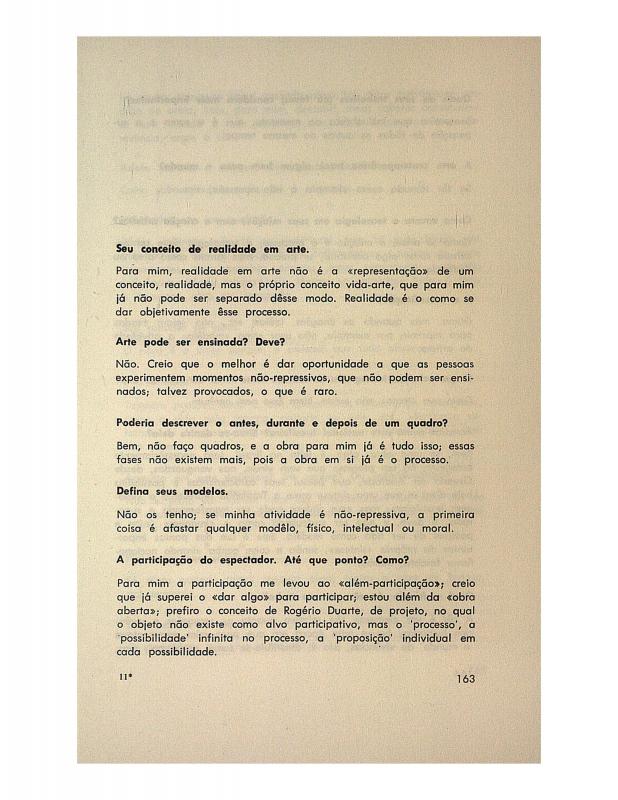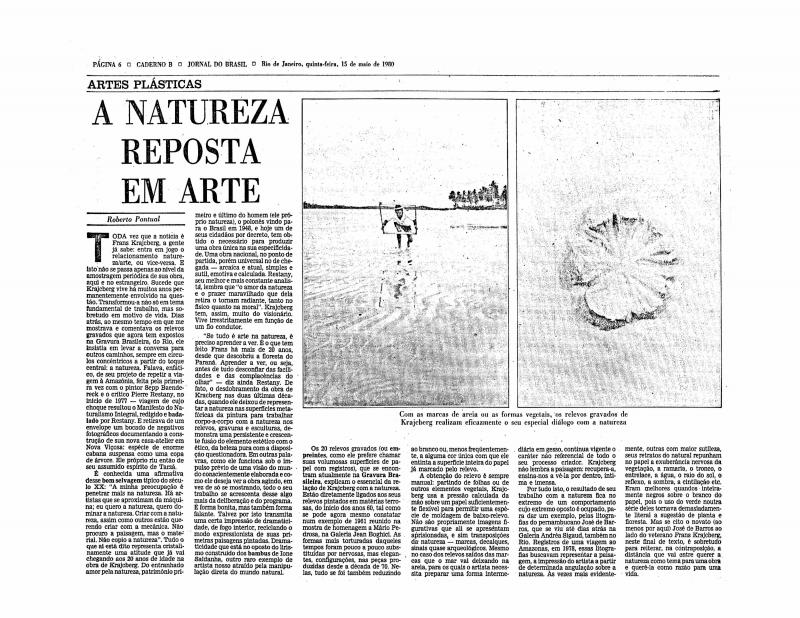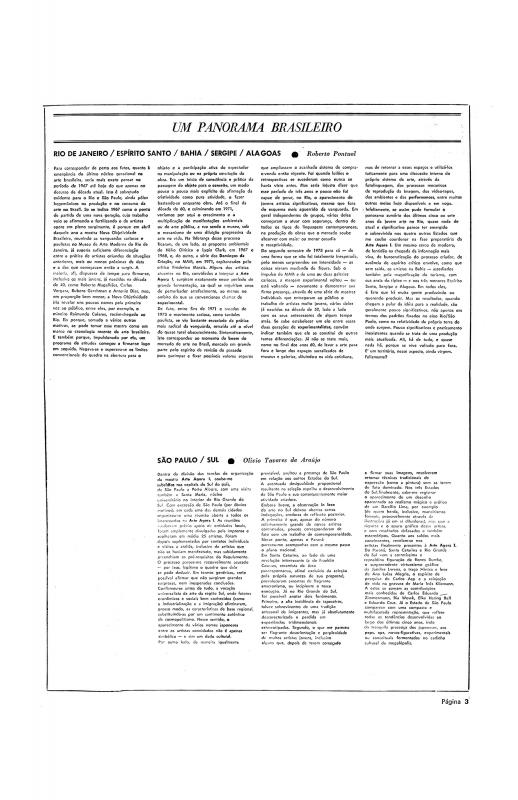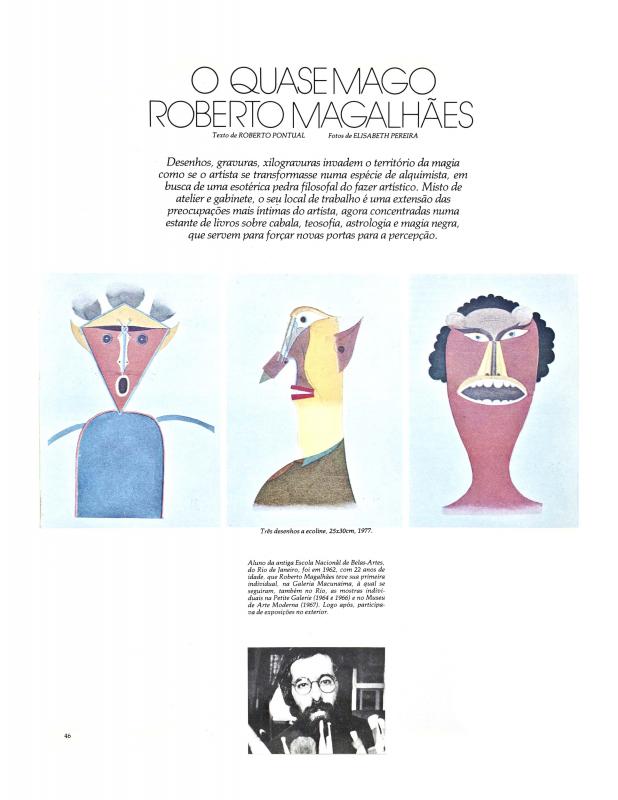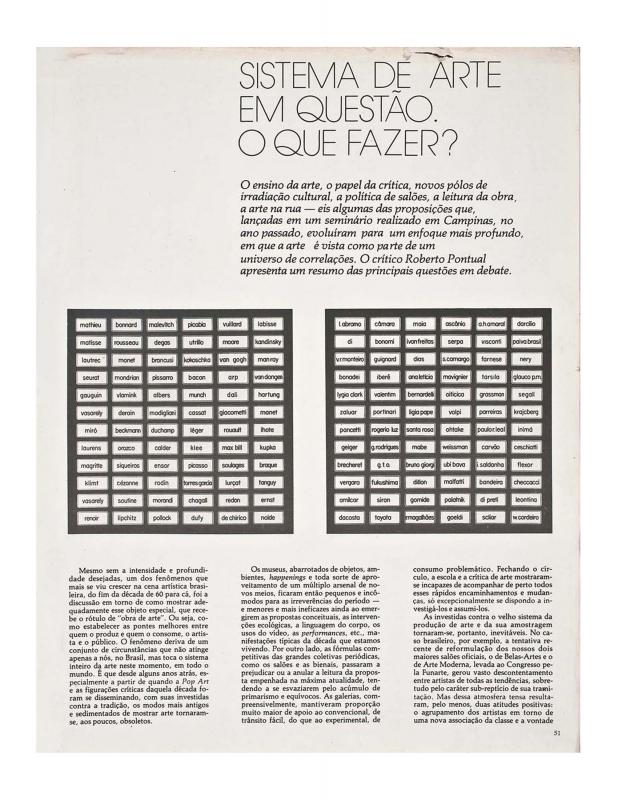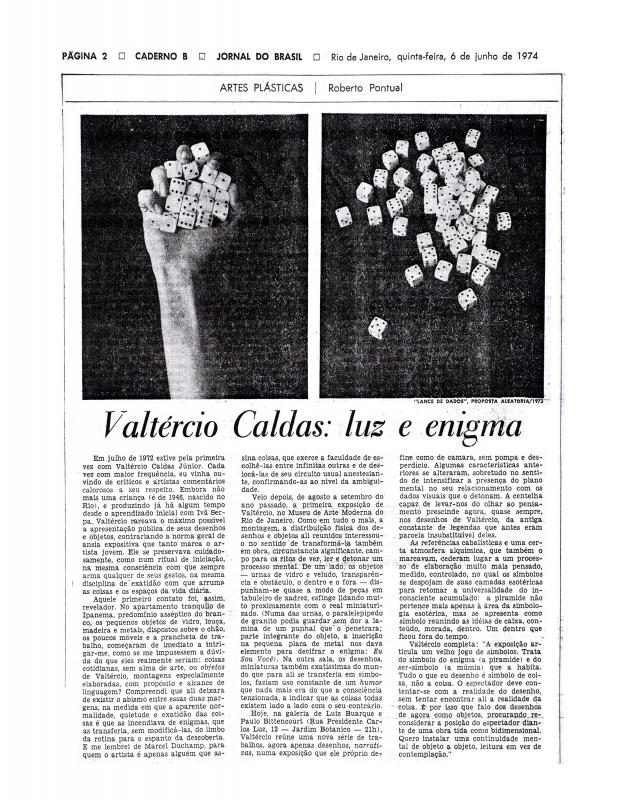This is undoubtedly one of the first studies made by an art critic of the woodcut printing that was used to illustrate what in northeastern Brazil is known as “string literature.” These are traditional stories or legends of all kinds, either historical or drawn from local folklore, printed as slim booklets that were “hung” on a length of string at eye-level and offered for sale in markets and fairs in the northeastern region of the country.
A native of Recife in the state of Pernambuco, Roberto Pontual worked as a journalist and a literary and art critic in Rio de Janeiro. In 1969, he published the Dicionário[AB1] de Artes Plásticas, a point of reference in Brazilian art. An active participant in Brazilian art circlets since the 1960s, he was one of the major art critics in Rio de Janeiro in the 1970s. He was also the director of exhibitions at the MAM-RJ (Museu de Arte Moderna) from 1973 to 1976. In 1978, he organized the exhibition Geometria sensível at theMAM-RJ, for which he earned still more notoriety. Due to the tensions produced by the military dictatorship, he voluntarily exiled himself to Paris in 1980 where he lived until his death in 1992.
[As complementary reading please see, in the ICAA digital archive, the following texts written by Roberto Pontual: “Corpos de afago e dor = Bodies of caress and pain” (doc. no. 1111211), “Crise da crise? A resposta também pode ser nossa” (doc. no. 1110986), “Do mundo, a América Latina. Entre as geometrias, a sensível” (doc. no. 771399), “Os dois Brasis” (doc. no. 1110617), “Em torno do sistema da arte” (doc. no. 1110554), “Expor: impor ou propor?” (doc. no. 1110954), “Imagens da imagem” (doc. no. 1110688), “A natureza reposta em arte” (doc. no. 1111359), “Um panorama brasileiro” (doc. no. 1110604), “O quase mago Roberto Magalhães” (doc. no.1111080), “Sistema de arte em questão: o que fazer?” (doc. no. 1111082), and “Waltércio Caldas: luz e enigma” (doc. no. 1110563)].
[AB1]No translation.


